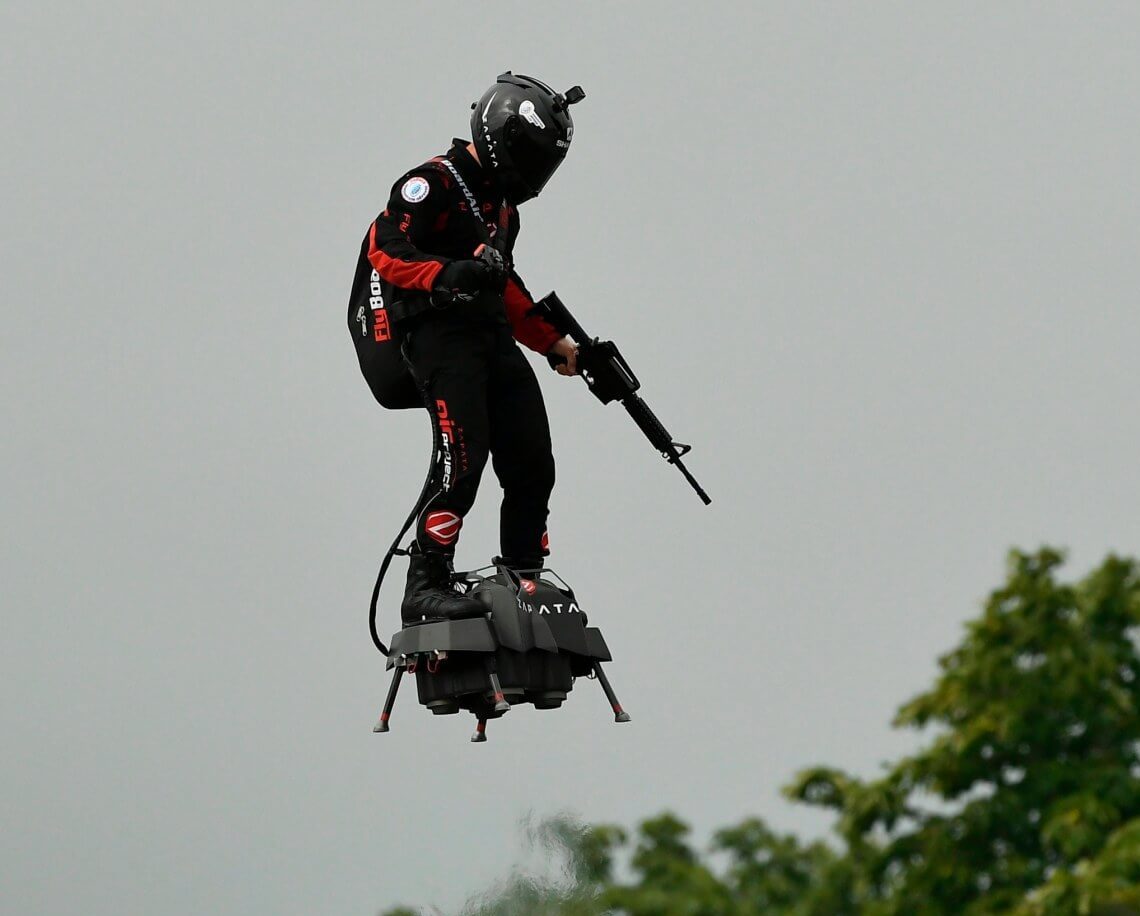
After a failed attempt in July, French inventor Franky Zapata successfully crossed the English Channel on a jet-powered hover board. Zapata completed the 22-mile journey aboard a device called the Fly board Air in just 22 minutes, reaching speeds up to 106 mph along the way.
Daily Current Affairs Quiz 2019
The Hover board Air uses four turbo jet engines for propulsion while a computer keeps the board stabilized. Zapata, who received $1.46 million from the French military to develop his hover board in 2018, wore a flight suit and helmet during his flight.
Although Zapata’s Fly board Air successfully carried him from Sangatte, France to Dover, England, it wasn’t a non-stop flight. Because the Fly board Air’s fuel tank is mounted on the rider’s back, it has a limited capacity, so Franky Zapata had to swap out tanks mid-flight on a floating platform.
In fact, it was that mid-journey pit stop that caused Zapata’s failed attempt to cross the channel last month. Due to choppy water and a small landing zone, Zapata ended up in the water rather than on the refueling platform. For his latest attempt, Zapata changed his route and increased the size of the landing pad, according to The Verge.
“We made a machine three years ago…and now we’ve crossed the Channel, it’s crazy,” he told the BBC after landing safely.
This may not be the first time you’ve seen Zapata and his Fly board Air in action. In mid-July Franky Zapata wowed spectators as he flew over France’s Bastille Day celebration on the Fly board Air while holding a gun. Zapata performed the stunt to show one possible use of the Hover board Air, one that isn’t as light-hearted as crossing the English Channel.
Watch Franky Zapata take off and land in the video above.





